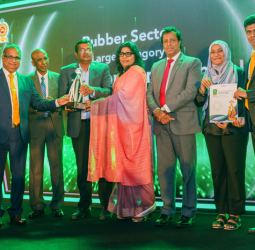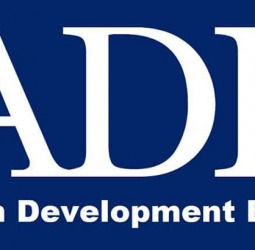Sri Lanka’s export earnings from apparel in 2024 reached USD 4.7 billion, recording a year-on-year growth of nearly 5%, according to the Joint Apparel Association Forum (JAAF) with the overall export value increasing to over USD 5 billion.
“If 2019 was used as a baseline, the last “normal” pre-pandemic and economic crisis year, Sri Lanka’s apparel export in 2024 communicates a more circumspect account for in 2019 Sri Lanka managed to export USD 5.3 billion resulting in last year’s exports reporting 10.3% shortfall.”
Exports to the US, Sri Lanka’s largest destination, grew by 5.23% year-on-year to USD 1.9 billion in 2024. Despite this, the figure remains 19.4% below 2019 levels, emphasising the potential to regain further ground. Growth in exports to the UK was robust at 7.65%, now nearing parity with 2019 levels, aided by sustained demand for ethically and sustainably manufactured garments. While growth in the EU was modest at 0.81%, the sector has maintained a foothold in a highly competitive and increasingly regulated market.
Exports to other new destinations grew by 10.13%, demonstrating both new market penetration, and the trend for the industry to label, pack and ship direct to third countries on behalf of our customers. The JAAF emphasises that localised fabric production remains critical for the industry’s long-term recovery and competitiveness. Located over a span of 300 acres, the zone has been designed and will provide opportunities for multiple verticals relating to the manufacture of textiles. Manufacturers can establish textile dying, washing, knitting, weaving and other associated plants in this dedicated area. This landmark project can save significant foreign exchange and reduce production lead times.
“The Eravur Textile Zone is more than just an initiative; it’s a lifeline for the industry. Localizing fabric production is crucial to increasing competitiveness and meeting the demands of global markets,” said Yohan Lawrence, Secretary-General of JAAF. Analysis of growth trends over the past five years indicates that while the sector has shown remarkable resilience, its trajectory reflects a gradual recovery process and the pandemic-induced dip in 2020 saw exports fall to USD 4.1 billion, a 22% drop from 2019.
The 5% growth in 2024 reflects also the downward pressure on pricing that the industry is currently seeing. Key policy actions such as enhanced market access, enabling infrastructure projects like the Eravur Textile Zone, transparency and predictability with electricity pricing and the easing operational bottlenecks as those currently experienced in the Colombo Port, are paramount for long-term growth.
The recent adjustment to electricity tariffs is a welcomed step by the industry, particularly as Sri Lanka’s energy costs have been higher compared to competitor countries.
Source: Daily News
You Must be Registered Or Logged in To Comment Log In?



 Mifra
Mifra



